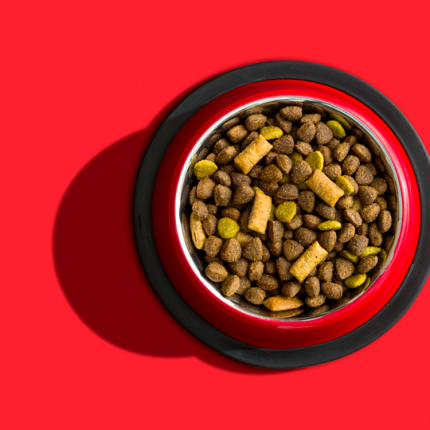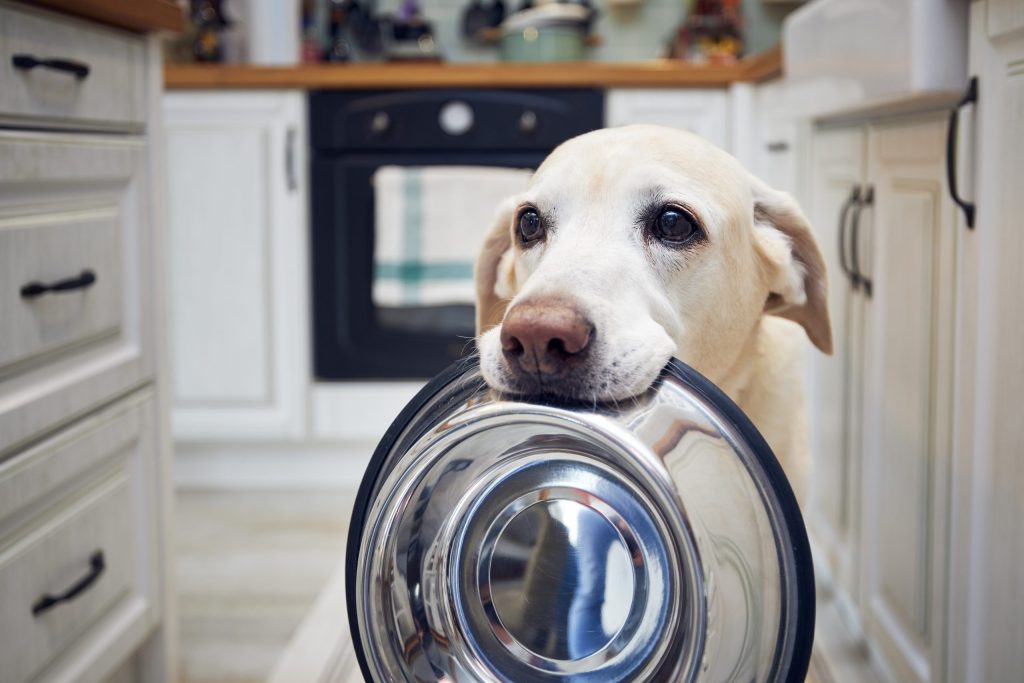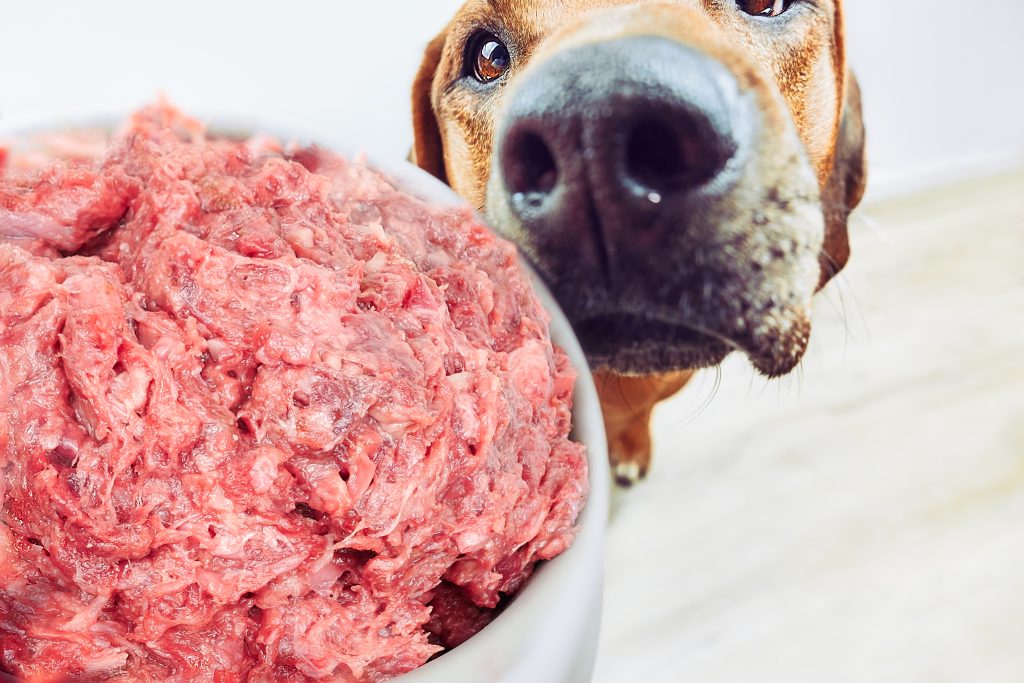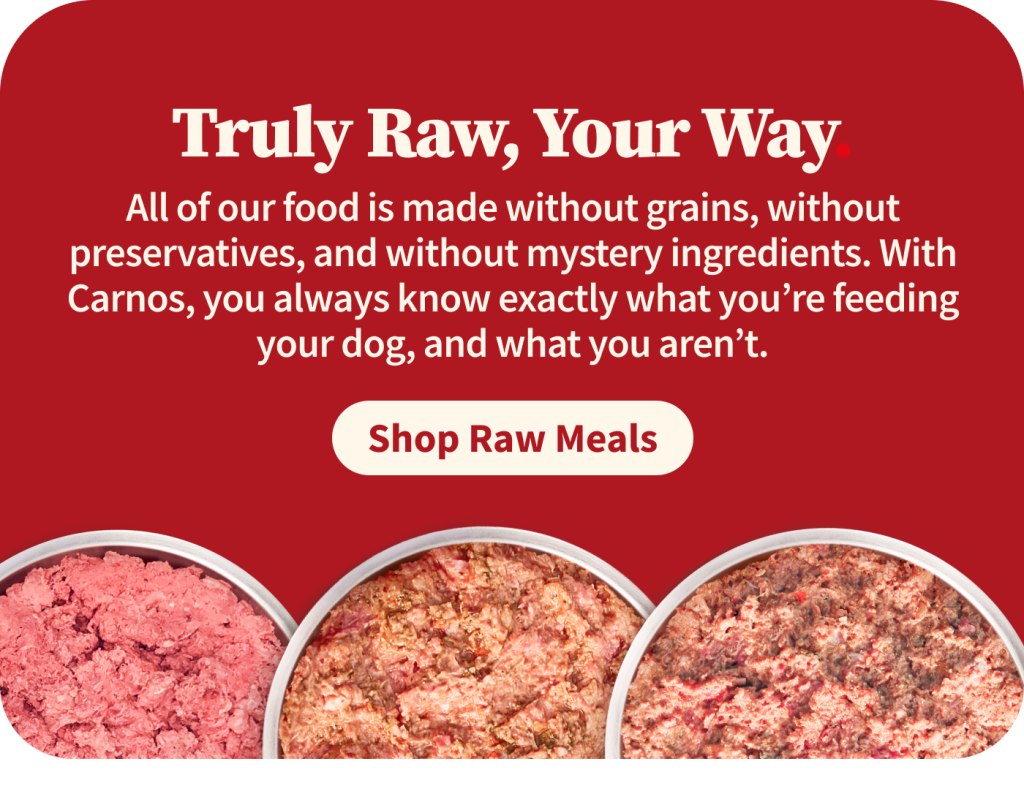The history of kibble.

The history of kibble.
It’s difficult to picture a world before kibble given how prevalent it is today. It’s the most reached for product when people need to feed their dogs, but this wasn’t always the case. Before the invention of dry kibble and canned pet food, through the mid-19th century, owners were feeding their dogs everything from homemade stews (if they were wealthy) to table scraps and leftovers, or the dogs scavenged outside for whatever they could find. The range of dog diets was varied and largely based on the social standing of the dogs’ owners, with elites having the financial means to provide more and “common-folk” feeding whatever they could spare. This was long before dogs were as beloved as they are today; before they lived inside with their owners and before they were considered part of the family.
1860 – The commercial pet food industry was born.
With the Second Industrial Revolution came the “civilization” of dogs, and it didn’t take long for the commercial pet food industry to follow. As the middle class grew and families had more disposable income, keeping dogs as companion animals became more and more common. Thanks to this evolution, the market for specific food to feed these working-dogs-turned-pets opened up.
Commercialized dog food came into being with Spratt’s Cakes, the first commercialized dried dog food biscuits.
The way we feed our pets changed forever in 1860 when an electrician from Ohio by the name of James Spratt created the first commercialized dried dog biscuit – Spratt’s Dog Cakes. While living abroad in England, James noticed that sailors returning from long ventures at sea were feeding their leftover hardtack to stray dogs meandering around the ports. Hardtack, a type of dense cracker made from flour and water, was very inexpensive to make and perfect for provisions during long trips at sea and military campaigns due to its long shelf life.
This sparked an idea for the electrician. Using these non-perishable biscuits as a model for his own, Spratt created the first commercialized dog food out of a mixture of wheat, vegetables, and dried meat (Spratt was notoriously hush-hush about the exact origin of this particular ingredient), all bound together and baked. With this ingredient list, the biscuits were inexpensive for Spratt to make and easy to produce at a large scale. He targeted the wealthier class and Spratt’s Patent Meat Fibrine Dog Cakes quickly took hold in England. And with the aggressive marketing tactics Spratt employed, it didn’t take long for his product to catch like wildfire when he opened up operations back across the pond in the US in the 1870s.
Over the next several decades, the demand for commercialized dog food only continued to grow and other companies began to develop their own lines in competition.
Canned pet food came next in the 1920s.
In the 1920s, the Chappel Brothers Corporation of Illinois became the first to introduce canned pet food to the market with their Ken-L-Ration product – the main ingredient: horse meat. After World War I, horses were systematically replaced by automobiles and tractors and thus were inexpensive and plentiful across The States. The Chappel Brothers took advantage of this, marketed their product as made of “US-Government Inspected lean red meat”, and had consumers particularly sold on the convenience factor of another ready-to-serve, shelf-stable pet food. In fact, this canned dog food became so popular that producers were breeding and raising horses exclusively for their meat; upwards of 50,000 horses were slaughtered a year solely for the dog food market.

The marketing for commercialized pet food had reached new heights with Ken-L-Ration. They were everywhere – they had their own jingle, their own commercials, they even sponsored Disney Land’s pet hotel (Ken-L-Land) as well as a popular radio show, The Adventures of Rin Tin Tin, a famous German Shepherd featured in various movies at the time. The company’s marketing was so effective that the reason Americans refer to dogs as “Fido” even today is because the Ken-L-Ration mascot was a yellow dog named Fido. Ken-L-Ration was officially a household name, and canned dog food was officially the go-to choice for the American pet owner.
The pet food market circled back to dry dog food in the mid-1900s.
But things soon shifted again. During World War II, both aluminum and meat were rationed and thus the metal used to make cans for wet dog food was no longer available, nor was the abundant horse meat. Necessity once again became the mother of invention and manufacturers scrambled to find an alternative that would still meet the qualifications that the consumer had come to expect: convenient and shelf-stable. General Mills acquired Spratt’s US dog food company in the 1950s and Ralston Purina began to experiment with pet food using with the technology originally used to create their cereals meant for human consumption. It was back to the dry stuff.

Extruded kibble entered the market in 1957.
The kibble we know today burst onto the scene in 1957. Originally in the business of producing grain-based feed for farm animals and cereals for humans, Purina was the first company to use extrusion (a practice used for the mass-manufacturing of shelf-stable products like cereal) to manufacture dog food. In this process, the raw ingredients are ground up and mixed before being cooked, then extruded (pushed out) through a die-cutting machine that creates the shape of the kibble pellets that we know today. To put it plainly, extruded food is made using extremely high heat and extremely high pressure, creating a shelf-stable final product but severely negatively impacting the nutritional value of the raw ingredients in the process.
Alongside this new shift in production of course comes a new push in pro-kibble marketing. In 1964, The Pet Food Institute (a lobbying group made up of commercial pet food manufacturers) hammered the public with a series of ad campaigns convincing pet parents that commercially manufactured food was the best and only option they should turn to in order to feed their pets. Already primed with decades of this type of messaging from the likes of James Spratt and the Chappel brothers, this was an easy sell to American dog owners.
Getting back to raw food as the best option for dogs.
Just because a product is readily available and convenient does not mean it’s the best option. And if you look at kibble through the lens of human nutrition and diet, the parallels are quite obvious. If you wanted to be your healthiest self, would you reach for overly processed junk food, or would you go for the real stuff? There’s a reason why most pet food brands do not disclose the full and accurate list of ingredients in their kibble, let alone advertise where those ingredients came from or how they were processed. Not only are many of them not healthy for our pets, but they’re actually harmful.

At the core of this stroll down memory lane is the understanding that pet kibble ultimately came to be thanks to scarcity of materials and gained traction through aggressive and misleading marketing tactics employed by profit-driven companies; it was never rooted in supporting the optimal health of our pets. The best thing we can do for our four-legged companions is to feed them a complete and balanced diet made up of real, whole foods. Dogs are anatomically designed to derive their nutrients from raw meat, organs, and bone – their stomachs are highly acidic and built for breaking down raw animal protein. Alternatively, their bodies struggle to properly digest and pull nutrients from overly processed kibble which is often full of synthetic fillers, preservatives, and byproducts. By feeding our dogs a diet balanced over time and made up of real, raw foods, we are giving them all the nutrients they need to thrive in a way that their bodies are best able to utilize.
Want to learn more about how to feed your dog a raw diet, or how to transition your dog from eating kibble to eating raw? Send us an email to help@carnos.com and one of our raw feeding experts will be in touch to provide one-on-one support for your unique pet.
